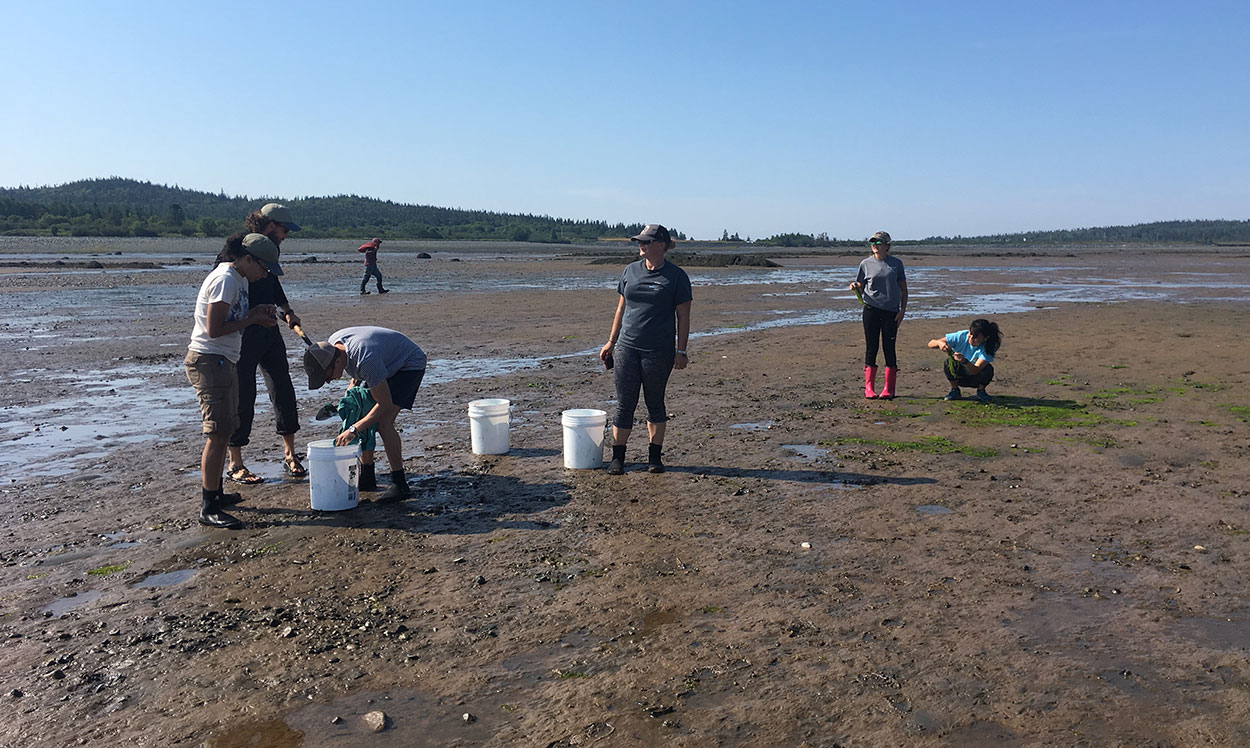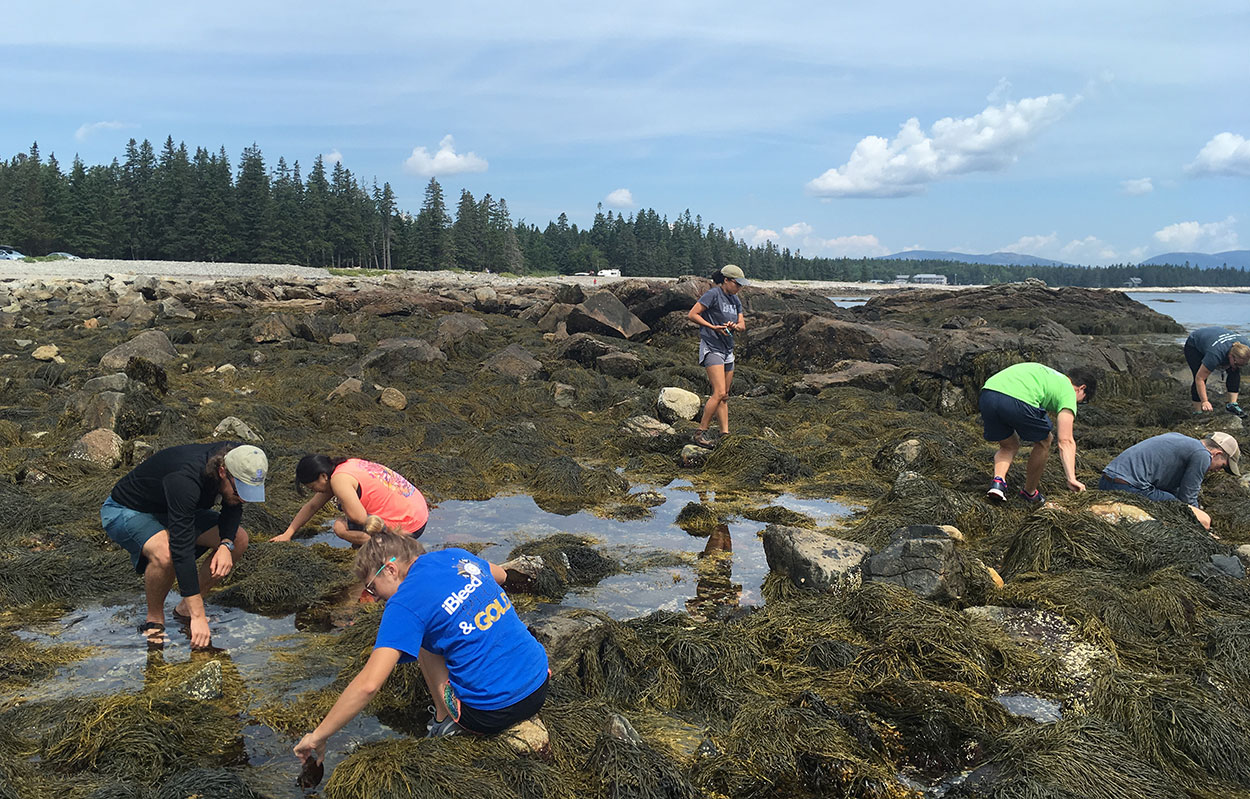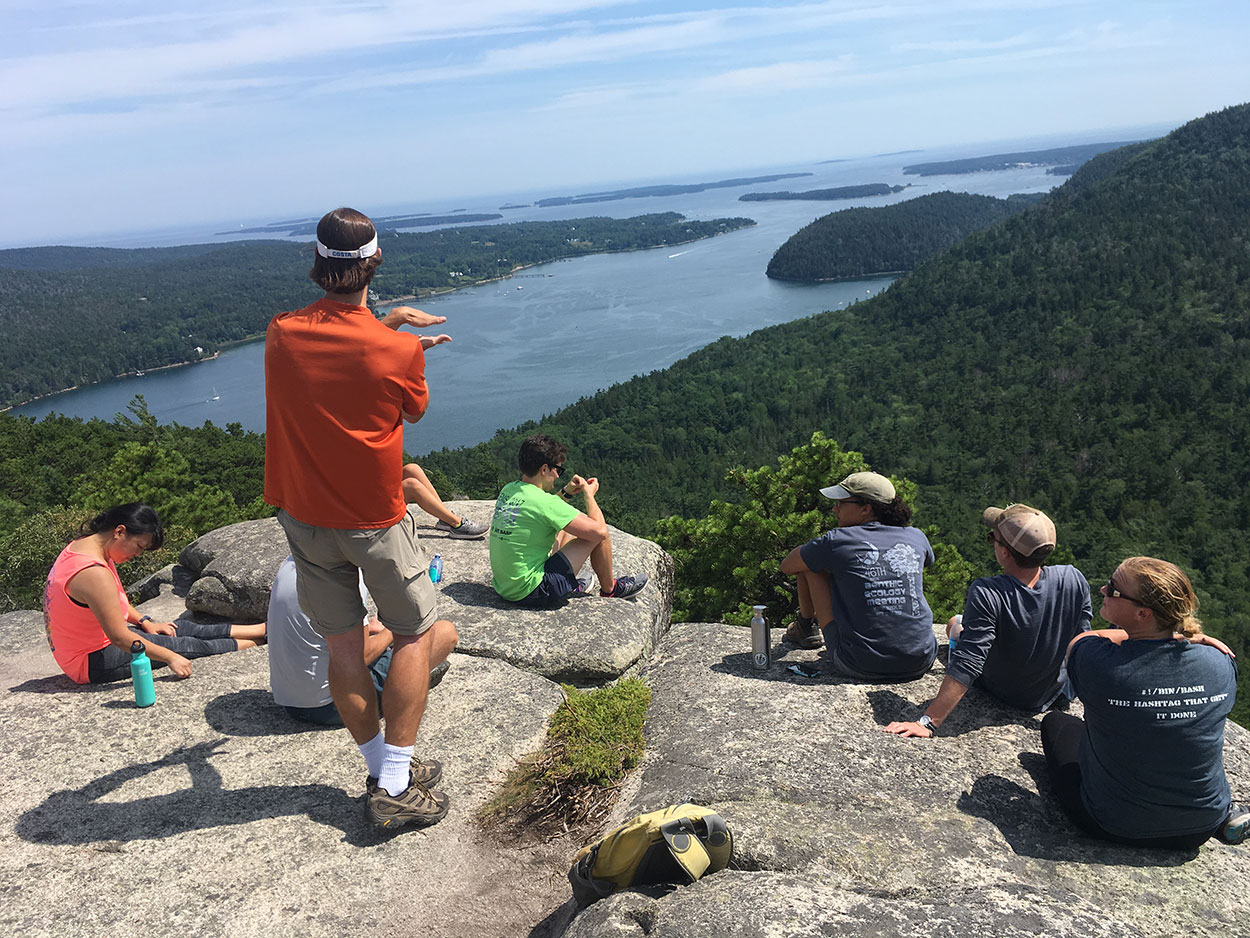
A trip to the coast of Maine this fall gave graduate students at the Dauphin Island Sea Lab and University of South Alabama the chance to broaden their horizon and work outside their comfort zone. The field class taught by Drs. Kelly Dorgan and Brian Dzwonkowski spent two weeks working out of the Darling Marine Center, which is the University of Maine’s field station.
“The goal of the class is to introduce them to a really different environment to where they generally work,” Dorgan said. “They get the chance to conduct research in a new environment that has a different set of problems.”
The class spent their time in Maine collecting data to understand the impact of oyster feces and pseudo feces on the sediment community and nutrient cycling in sediments in the Damariscotta River Estuary.
“Oysters are filter feeders. They filter particles from the water, and what they don’t want to eat gets packaged and deposited as pseudo feces, and what they eat becomes feces,” Dr. Dorgan explained. “This creates a great deal of organic matter which sinks to the sediment. Bacteria in sediments consume this organic matter, which can deplete the oxygen on the bottom. It can also change the cycling of nutrients.”
The Maine coast has a large tidal cycle which can impact the settlement of this organic material to the sediment bottom. With the fast flow back and forth of the tides, the students researched how much of the oyster feces and pseudofeces sinks to the bottom beneath the oyster farm and how much is moved away from the oyster farm with the tide.

“Our students had very different areas of expertise, so we encouraged them to come up with a project where if each of them can generate data to tell part of a story, they could then fit the pieces together and tell an interesting story and possibly publish the work,” Dorgan said. “It was a true interdisciplinary collaboration.”
Steve Dykstra measured the flow of the water along the bottom of the riverbed and analyzed data from a long-term buoy nearby to put the study in a broader context.
Cy Clemo built an instrument that created shear on the bottom to look at how much sediment eroded when the bottom was stirred up by the tides. The students wondered whether the organic matter gets deposited or simply washed away with the strong flows in the study area.
Will Ballentine measured the sinking rate of feces and pseudo feces of the oysters. Will and Steve combined their data to determine how far in each direction the sinking feces would travel over a tidal cycle.
Kara Gadeken, Alex Hagemeyer, and Mai Fung measured sediment oxygen demand and nutrient fluxes from the sediment collected underneath the oyster farm and away from the farm.
Gadeken and Clemo also dove for the research, in much colder water than they experience in Alabama.

The students did have the chance for a few side trips to learn more about the marine environment of Maine. A trip to Lubec, which is on the Canadian border and at the mouth of the Bay of Fundy, allowed the students a chance to explore a mudflat. The tides in the area are about 18 feet in the difference between low and high.
Dr. Brian Dzwonkowski delivered a lecture on geomorphology in Acadia National Park. The class hiked to an area where they could see the islands and the glacially carved landscape. The coastal oceanography in the area is much different with the tides.
While working with the oyster farmers, the class learned about the differences in challenges between the Gulf of Mexico and the North Atlantic.
“There the water is very clear, and they’re concerned about whether there’s enough food for the oysters,” Dorgan explained. “There’s also concern about having are too many oysters in a small confined estuary. When oysters make their shell they can lower the pH of the water. If there are too many oysters making a shell, then it can cause the water to become more acidic and harder to secrete shell. Increased carbon dioxide in the atmosphere leads to more acidic water, so with global climate change, the capacity of these estuaries to grow oysters may decrease.”
Since returning from Maine in September, the students have been analyzing their data and working on a manuscript that they hope to publish.